#nuthatches
Text

White-breasted Nuthatch (Sitta carolinensis)
February 3, 2024
Southeastern Pennsylvania
#birds#bird#photographers on tumblr#white breasted nuthatch#nuthatches#birdblr#birb#birbs#ornithology#birblr#nature#animals#wildlife photography#Sitta carolinensis
644 notes
·
View notes
Text



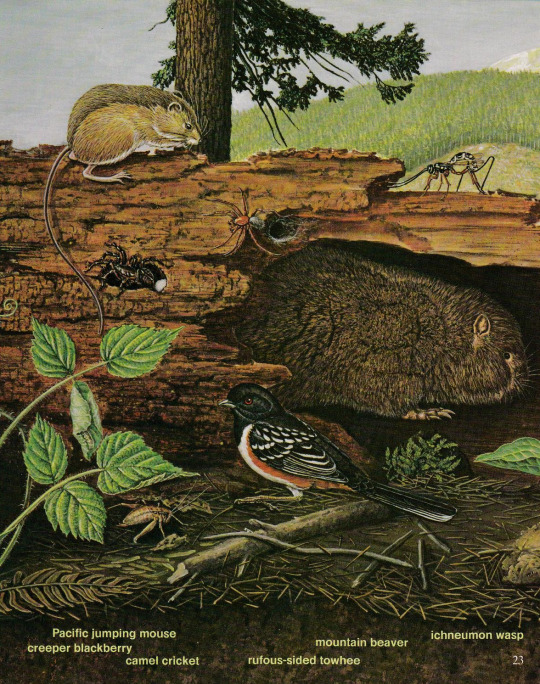

Ranger Rick's Nature Magazine; November 1973 edition. Signed Sandström.
Internet Archive
#mammals#rodents#squirrels#douglas squirrels#chipmunks#townsend's chipmunks#pacific jumping mice#beavers#mountain beavers#mephitids#skunks#spotted skunks#eulipotyphla#shrews#trowbridge's shrew#birds#nuthatches#red-breasted nuthatch#raptors#owls#great horned owls#corvids#jays#steller's jay#towhees#rufous-sided towhee#bugs#insects#beetles#went thru and tagged everything labelled here only to have the rest of them disappear bc i forgot there was a TAG LIMIT.
417 notes
·
View notes
Text
BOTD: Brown-headed Nuthatch

Photo: Jamie Chavez
"A small nuthatch of the southeastern pine forests. Found in pairs or family groups all year, it is often heard before it is seen; the birds call to each other constantly as they busily clamber about on the branches. In winter, small groups of Brown-headed Nuthatches often join mixed foraging flocks including chickadees, woodpeckers, and Pine Warblers."
- Audubon Field Guide
#birds#brown headed nuthatch#birds of north america#north american birds#nuthatches#passerines#birds of the us#birding#bird watching#birdblr#birblr#bird of the day#Sitta pusilla
51 notes
·
View notes
Text

A Eurasian nuthatch (Sitta europaea) in Gothenberg, Sweden
by Hanna Knutsson
#eurasian nuthatch#nuthatches#birds#sitta europaea#sitta#sittidae#passeriformes#aves#chordata#wildlife: sweden#wildlife: europe
90 notes
·
View notes
Photo
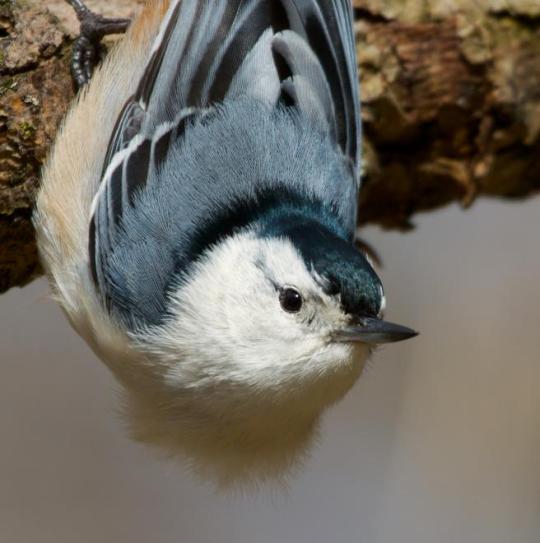



Going Nuts for the White-Breasted Nuthatch
requested by @crazychooklady
Common throughout woodlands southern Canada, the United States, and Mexico, the white-breasted nuthatch (Sitta carolinensis) is a small passerine bird known primarily for its ability to climb down trees headfirst. It inhabits deciduous, mixed, and evergreen forests, as well as wooded parks and some urban areas-- anywhere with trees suitable for nesting. S. carolinensis uses pre-existing holes, usually those made by other birds, rather than building their own. They don’t migrate, but rather males guard their own separate territories and mates year round.
The white-breasted nuthatch is a long-term monogamous species; once pairs form, they stay with each other until one member dies, although extra-pair matings with is common for both sexes. The breeding season can occur any time from April to July, depending on the population’s region, and usually lasts about two months. Unpaired males sing to attract potential mates, and paired couples begin preparing their nest hole with fur and plant material. The female lays between 5 and 9 eggs, which she incubates while the male brings her food. After 13-18 days the eggs hatch, and both parents provide their young with food until they fledge about a month later. Fledglings will stay with their parents for another 2-4 weeks before leaving to find territories and mates of their own.
On the whole they are solitary birds, but in the winter, S. carolinensis can sometimes be seen in mixed flocks with titmice and chickadees. This is likely to increase the chances of escaping predators, which include owls and hawks. Woodpeckers, squirrels, and climbing snakes will also go after eggs and nestlings. One unique trick white-breasted nuthatches use to protect their nests from these predators is wiping the entrance to their tree hole with a piece of fur or leaves every time they leave to obscure their scent. Their foraging style is also very singular; crawling up and down trees and even upside down on branches to search for seeds and insects.
Of the three nuthatch species, the white-breasted nuthatch is squarely in the middle in terms of size. They typically measure 13-15cm in length, with a wingspan of 20-27cm and weighing 18-30g. The bill is long, thin, and slightly upturned to help S. carolinensis forage under bark while upside down. Their back is a distinct grey-blue, and the wings and tail are a mix of black, grey, and white. A black crown caps their forehead, and the cheeks and belly are white as the name suggests. There are 9 subspecies across north America, distinguished mainly by color variations and the degree of sexual dimorphism.
Conservation status: Due to its large population, at an estimated 10 million individuals, and signs that this population is growing, the white-breasted nuthatch is rated as Least Concern by the IUCN. However, in areas where increased foresting has removed trees suitable for nesting populations have begun to decline.
Joan Tisdale
Dennis Allard
Tom Gray
Matt MacGillivray
#white-breasted nuthatch#Passeriformes#sittidae#nuthatches#perching birds#birds#deciduous forests#deciduous forest birds#evergreen forests#evergreen forest birds#mixed forests#mixed forest birds#urban fauna#urban birds#north america#central america#animal facts#biology#zoology#requested
547 notes
·
View notes
Text
When nothing much
is going on, there’s still some activity apart from the MoDos. I call them the tiny crowd, and they are usually the first to greet me when I open the buffet in the morning. I often just stand ofr a bit to watch them, and they just make me smile. There’s two kinds of Nuthatches - the very human-friendly teensy Redbreasted and the more shy but equally diligent Whitebreasted. You can tell male and females apart by the color of the broad center stripe on their head. Males have a jetblack one, females more grey. Also belonging to the tiny crowd - the choir in the back, friendly Chickadees and Titmice. Come good into Wednesday!
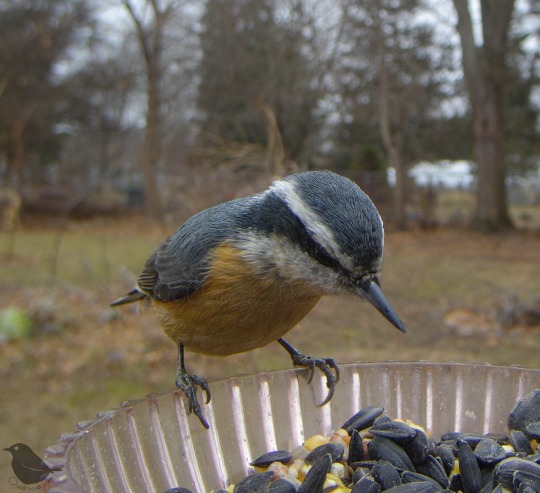

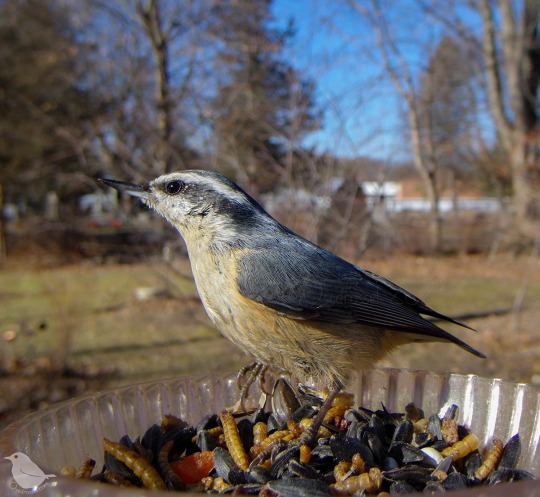
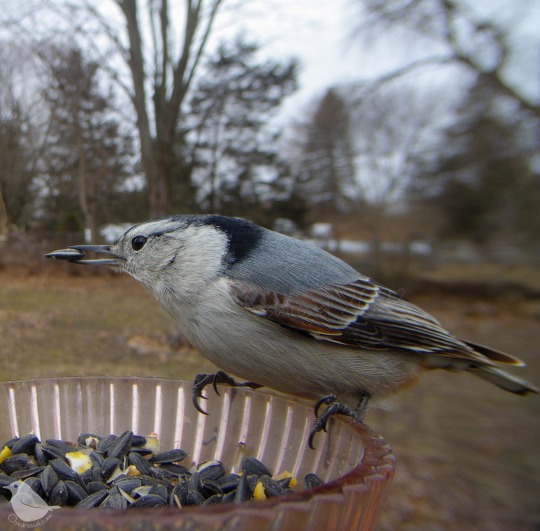


#birds#backyard birds#tiny crowd#nuthatches#Chickadeedeedee#chickadee#Tufted Titmouse#titmice#birds of Michigan#birds of north america#birdwatching#birdlovers#nature#Ostdrossel#birdphotography#Wednesday vibes
181 notes
·
View notes
Text
Apparently I've taken up photography. White-breasted nuthatches in my backyard!

403 notes
·
View notes
Text

Bird fight. Red-breasted nuthatch & black-capped chickadee duking it out
81 notes
·
View notes
Text
Made a pal 🥰
22 notes
·
View notes
Text
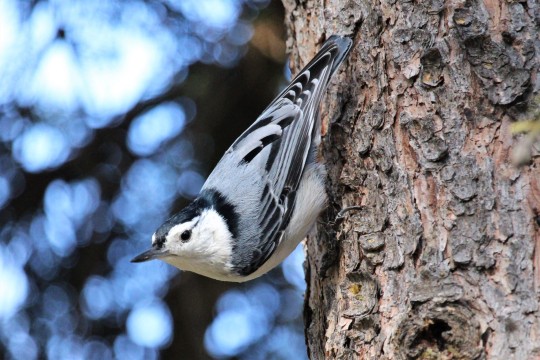
A white-breasted nuthatch (sitta carolinensis) skittering down the tree for a closer look
13 notes
·
View notes
Text

Red-Breasted Nuthatch (1/30/2023)
#birds#my photography#photography#red breasted nuthatch#nuthatches#nuthatch#nature#wild birds#wildlife photography#animals#cute
2 notes
·
View notes
Text

Dude, careful, you're standing on poison ivy!
White-breasted Nuthatch (Sitta carolinensis)
Feb 27, 2024
Southeastern Pennsylvania
#Birds don't react to poison ivy like humans do#In fact they are the main dispersers of poison ivy seeds when they eat the berries#bird#photographers on tumblr#birds#white breasted nuthatch#nuthatches#Sitta carolinensis#birdblr#birb#birbs#ornithology#birblr#nature#animals#wildlife photography
373 notes
·
View notes
Text

How to Draw Birds. Written and illustrated by Raymond Sheppard. 1940.
230 notes
·
View notes
Text
BOTD: White-breasted Nuthatch
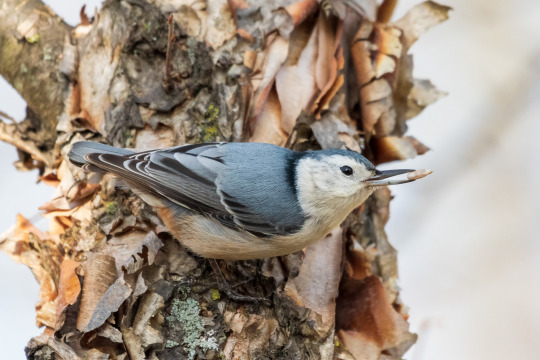
Photo: Bill VanderMolen
"Readily attracted to bird feeders for sunflower seeds or suet, the White-breasted Nuthatch may spend much of its time industriously carrying seeds away to hide them in crevices. Its nasal calls are typical and familiar sounds of winter mornings in deciduous woods over much of North America."
- Audubon Field Guide
#birds#white breasted nuthatch#birds of north america#north american birds#nuthatches#nuthatch#birds of the us#birds of canada#birds of mexico#birds of america#american birds#birding#bird#birdblr#birblr#bird of the day#Sitta carolinensis
52 notes
·
View notes
Photo

Shot from this past winter. Always fun to dig through pictures and find new inspiration from old pics you took. #bird #birds #birdphotography #photography #original #originalphotography #nature #wildlife #wildlifephotography #nuthatch #nuthatchesofinstagram #nuthatches #sask #saskatchewan #birdsofinstagram #birdlovers #saskbirding #birdsofsaskatchewan #nikon #nikonphotography #nikond500 #kings_birds #feather_perfection #your_best_birds #birdfreaks #pocketbirds https://www.instagram.com/p/CjUaiKqAAC1/?igshid=NGJjMDIxMWI=
#bird#birds#birdphotography#photography#original#originalphotography#nature#wildlife#wildlifephotography#nuthatch#nuthatchesofinstagram#nuthatches#sask#saskatchewan#birdsofinstagram#birdlovers#saskbirding#birdsofsaskatchewan#nikon#nikonphotography#nikond500#kings_birds#feather_perfection#your_best_birds#birdfreaks#pocketbirds
2 notes
·
View notes
Note
may I please request treecreepers or nuthatches?
Absolutely! Nuthatches are some of my favourite birds-- I love the way they hop down tree trunks. If there are any species in particular you’d like to see, let me know!
8 notes
·
View notes